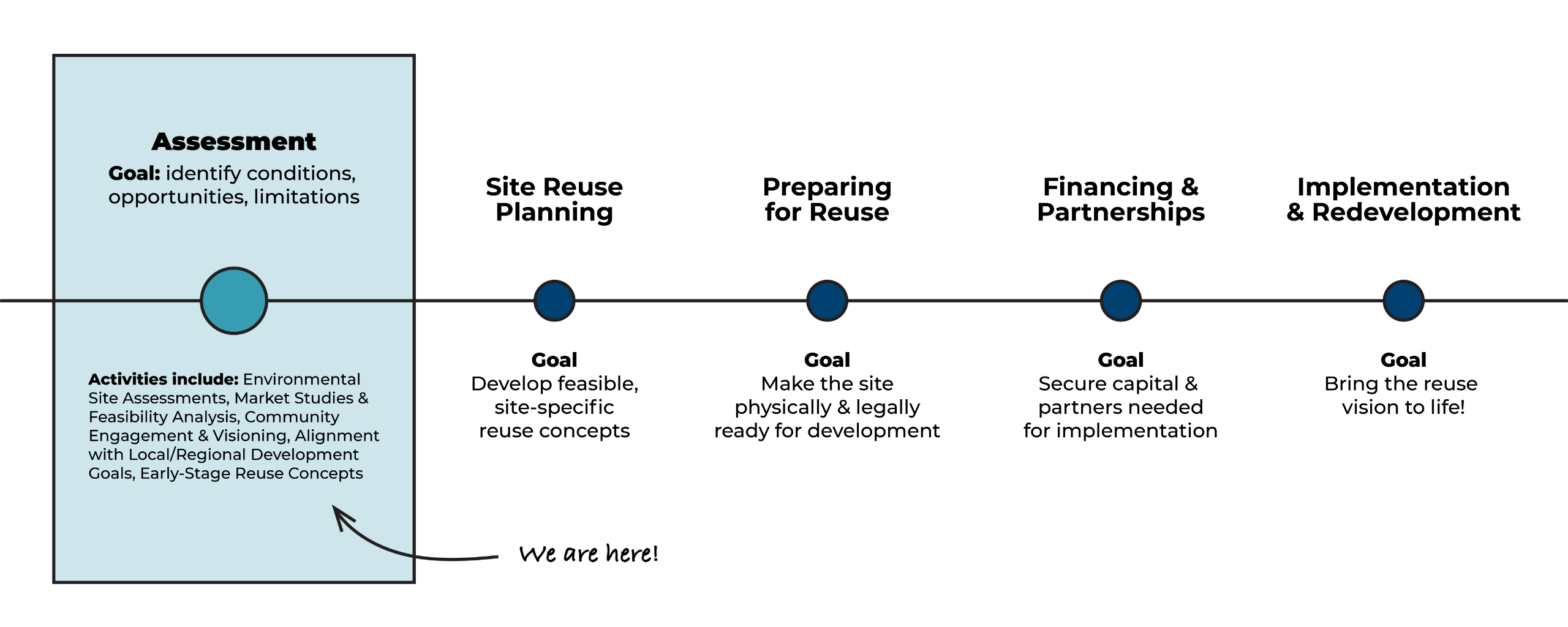What is a Brownfield?
A brownfield is any property where real or suspected contamination is making it hard to sell, reuse, or redevelop. That includes the obvious suspects, like an old factory or gas station, but it can just as easily mean buildings or properties in downtowns, neighborhoods, and along Main Streets.
These are often the places we drive or walk past and think, “Something should happen there,” but nothing does, because the path forward feels too uncertain or too expensive.
The Brownfield Redevelopment Process

Brownfield Isn’t a Bad Word
The word “brownfield” is not a negative label. It simply signals that the property has a past use and that some extra attention may be needed to make it viable again. In fact, identifying a site as a brownfield can be a smart and strategic move. It helps communities qualify for funding, technical support, and planning assistance that would not be available otherwise.
Why Brownfields Matter
Brownfields are often located in the heart of the community, near neighborhoods, schools, parks, or downtown areas. Reusing these sites means we can build on what we already have, rather than expanding outward. Redevelopment also improves safety, cleans up eyesores, and helps communities take control of their future.
Why Identifying Brownfields Helps
When a community recognizes and names its brownfields, it opens the door to solutions. That identification can help attract public funding, bring in expert support, and show investors and partners that the community is ready to take action. It can lead to new jobs, new uses for old spaces, and a stronger, healthier local economy.




